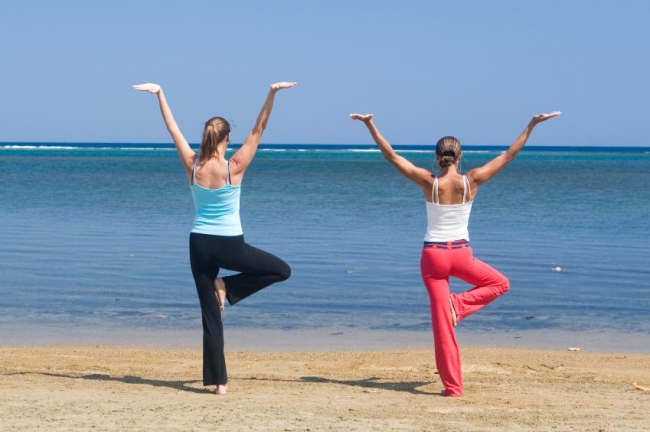
Yoga is one of the most ancient techniques of therapeutic recovery which functions on integrated practices that enable suppression of the symptoms of depression. It addresses and targets perceptions of anxiety, fatigue, stress and depression in every psychological, cognitive, emotional and behavioral domains and ensures possibility of long lasting healing along with self transformation towards betterment of one’s mental as well as physical health.
Yoga is often referred to as a relatively low-risk and high-yield approach which presents and preaches practical techniques for fighting self-anxiety and depression by tapping full potential of the mind. Our mind, body and soul are inter-connected and when a person is in a state of depression or anxiety, his body is thrown off guard leading to loss of control over it. Yoga involves a series of stretches, along with full concentration on breathing and proper postures, in an attempt to provide enough room for the body to regain its lost control and balance, not just by working on the body’s health but also by concentrating on the purification and peace of the mind and spirit of the individual.
Lotus position
Commence your yoga regime with the lotus asana or lotus position. Sit upright with crossed legs, back straight and hands resting on the knees with palms in an upward position. Slowly inhale and exhale fresh air. Remember, it is extremely important to concentrate on your breathing movements for any yoga asana to show positive results. After a panic, depression or anxiety attack, it is mandatory to ease off and calm down the rapid breathing and the bouts of anxiety and excitement. To enable this, focus on your breathing at first. Count five while you breathe in and another five when you breathe out till your breathing becomes natural and sets with the rhythm of the practice. Keep your eyes shut during the entire procedure and try listening to and focusing on the rhythm of your breath. Continue doing this for 5 to 10 minutes. This asana would definitely make you feel calmer and more composed, thereby releasing the excessive tension and fatigue of your mind, body and soul.
Warrior pose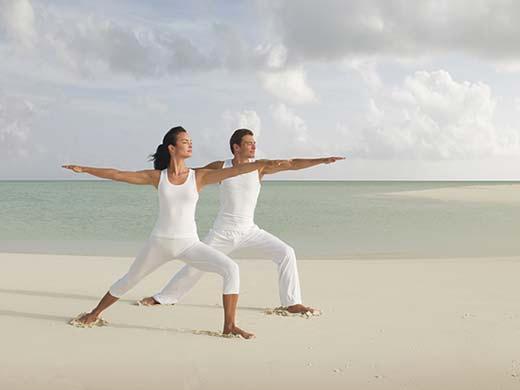
The warrior pose enables you to throw out and get rid of all your negative thoughts and anxieties which lead to bouts of depression and mood swings. It makes you focus and concentrate on your central nervous system, thereby rectifying the minor wiring issues of your brain cells and making you feel more relaxed and relieved. To practice this posture, keep your upper body straight and stretch both your hands bringing them right above your head and joining them as if praying. Align your right thigh parallel to the floor by placing your foot forward on the floor. Next, slip your left foot at the back and stretch it to the maximum without bending the knees. Now, try rotating the left foot between 45 to 90 degrees. Continue for 30 to 45 seconds. Then change position and try the same posture with the other thigh parallel to the floor.
Lion pose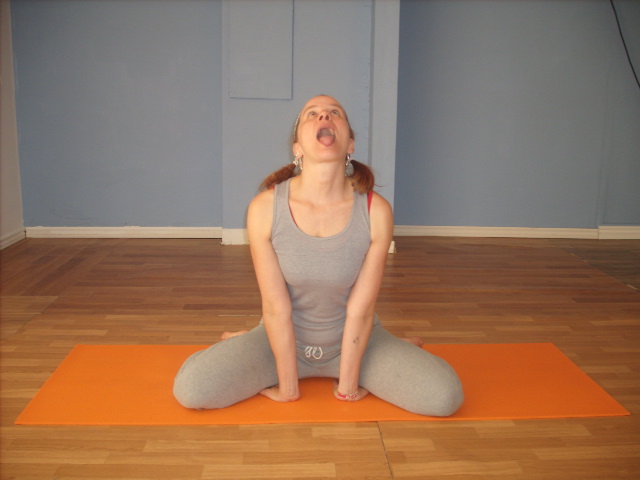
Just as the name suggests, the lion pose focuses on the behavioral pattern and body posture of a lion. This asana lets you release excessive mental pressure, thereby enabling you to roar out your mental stress and anxieties which are a key component for causing depression. For doing this, you have to kneel down on the floor, crossing the front of the right ankle over and above the back of the left one. Keep your feet pointing out to the sides. Now, pressing your palms against your knees, hold them in this posture while you continue to take long breaths from the nose. Split your mouth wide open and curl out the tip of your tongue towards your chin. Now start breathing slowly through your mouth, make sure it reaches the back of your throat. Halt at this posture and roar for 2 to 3 times. Repeat the same procedure by changing the cross of your legs.
Child pose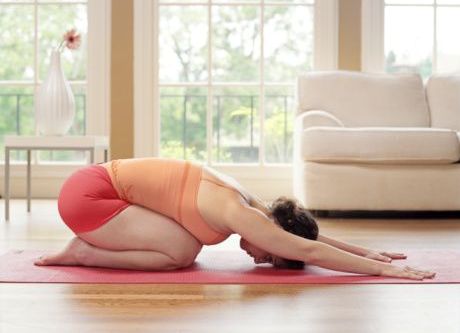
Child pose or balasana is a resting pose which can assist in calming down the body and mind when it is under deep stress. You can switch to child pose anytime during the practice regime whenever you feel low and experience a feeling as if the body has been pushed too far. To work on this posture, kneel down on the floor with toes touching together and sit on your heels. Stretch and separate your knees as much as required to accommodate the width of your hips. Next, place your torso betwixt your thighs and try touching your nose and forehead forward, on the ground. Place your hands with palms facing upwards alongside your torso. Freeze in this position for about 2 minutes. Keep breathing deeply with full focus on the inhalation and exhalation process with your eyes closed and resting.
Fountain of youth pose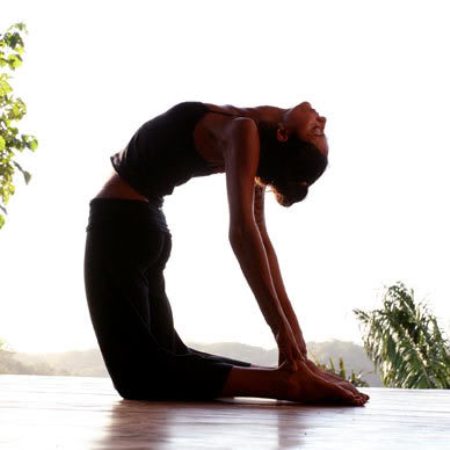
Often referred to as the fountain of youth pose, viparita karani is a posture for relieving both depression and anxiety as it specializes in imparting a soothing and energizing effect to the mind, body as well as the soul. It can be undertaken by beginners as well as experts. To kick it off, lie down flat on the floor on your back with arms placed at the side and palms facing down. Alternatively you can even keep your arms open with palms facing upwards to help open out heart even more. Keep your legs erect at 90 degrees and rest them against the wall to enable you hold this pose for a longer time period, comfortably. For more advanced levels you can even lift up your lower back by resting the bottom on your palms.
Fish pose
Fish pose is tagged as a terrific pose which enables your heart to open. Clubbed with back bending yoga positions, it is believed to enable expansion of the rib-cage, giving the lungs more room for breathing and also opening the spiritual heart center. Opening the heart or stretching the chest eases off respiration thereby relieving stress by unclogging the tension within the tissues in the core. Lie down on your back with arms placed on the sides. Rounding off your back, lean back as far as the crown of your head can comfortably stretch. You can even lay a bolster, a yoga block or a pillow under your back for enhanced support.
Bridge pose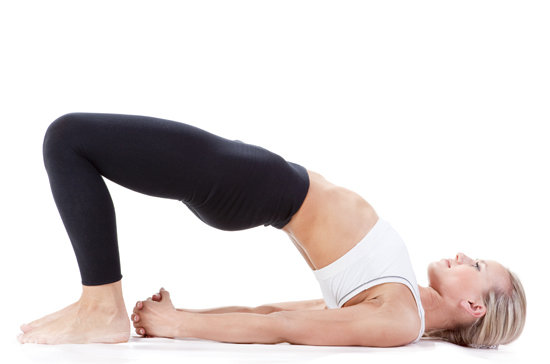
The yoga bridge pose or the setu bandha sarvangasana is different from that as done by gymnasts. In yoga, to practice this asana, you have to bend your knees and try to lift the core with arms placed at the side and palms facing up or interlocked with fingers behind the back. This posture calms down the mind and recharges the body thereby releasing depression and tension. A bolster or pillow can be kept underneath the back to enable you to hold this position for a longer period of time, in a more comfortable manner.
Locust pose
The locust pose is a yoga posture which is achieved by lying on the stomach with arms placed alongside the body. The arms and legs should be lifted together along with the chest as high as is comfortable. This position aids in opening the heart, helps rectifying poor posture and fights and relieves one of depression bouts, low energy, gas, bladder and back pain. You can slowly slide into dhanurasana or bow pose by first relaxing and then bending the knees, taking hold of the feet with the help of your hands. Now, pull back with the legs and hands to form a bow. This will help you to further open up the heart and chest.
Corpse pose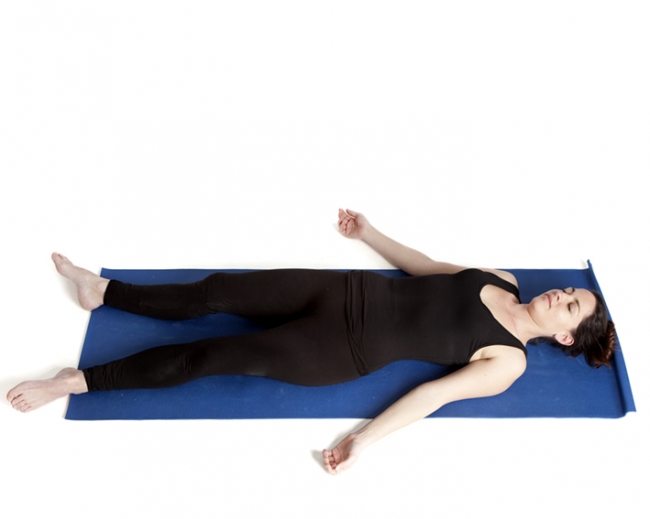
Savasana is the last summing up asana which should be practiced to wrap up every session of yoga regime. Also known as the corpse pose, it is considered to be the most vital posture which should never be skipped at any cost. Through this asana the body processes the received information and thereby finds solutions to work on its rectification. It is the ultimate relaxation position which is achieved by planting the entire body, including the palms, middle of the back and the back of the head, onto the mat. The feet are let to fall lose and the eyes are kept shut in an attempt to let the body relax and sublime into the pose. Keeping your eyes closed and focusing on your breathing, you should hang on to this pose for 5 to 10 minutes.


